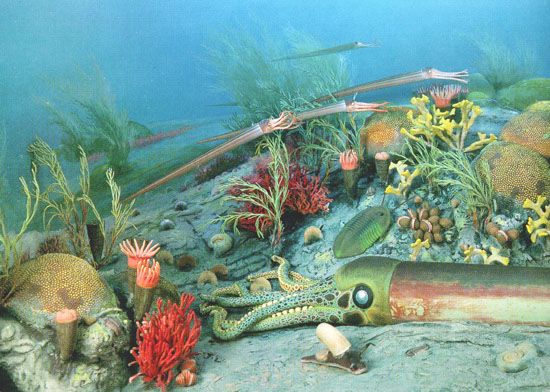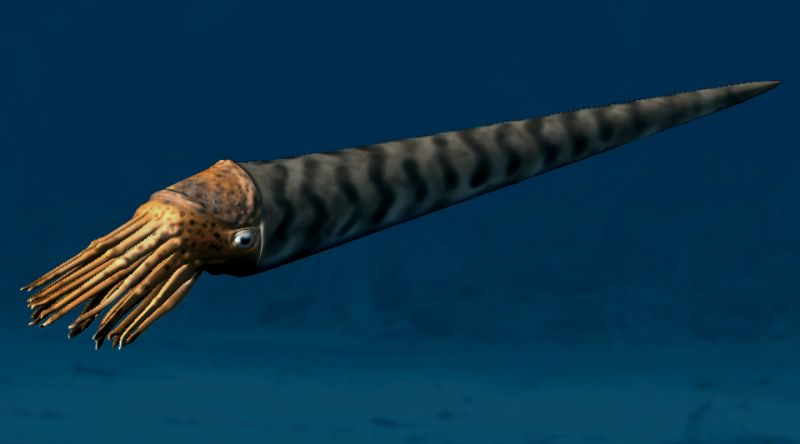The Ordovician is a geologic period and system, the second of six of the Paleozoic Era, and covers the time between 485.4 to 443.4 million years ago. It follows the Cambrian Period and is followed by the Silurian Period. While recognition of the distinct Ordovician Period was slow in the United Kingdom, other areas of the world accepted it quickly.
During the Ordovician, the southern continents were collected into a single continent called Gondwana. Gondwana started the period in equatorial latitudes and, as the period progressed, drifted toward the South Pole. Early in the Ordovician, the continents Laurentia (present-day North America), Siberia, and Baltica (present-day northern Europe) were still independent continents (since the break-up of the supercontinent Pannotia earlier), but Baltica began to move towards Laurentia later in the period, causing the Iapetus Ocean to shrink between them. The small continent Avalonia separated from Gondwana and began to head north towards Baltica and Laurentia. The Rheic Ocean between Gondwana and Avalonia was formed as a result.
A major mountain-building episode was the Taconic orogeny that was well under way in Cambrian times. In the beginning of the Late Ordovician, volcanoes along the margin of the Iapetus Ocean spewed massive amounts of carbon dioxide into the atmosphere, turning the planet into a hothouse. These volcanic island arcs eventually collided with proto North America to form the Appalachian mountains. By the end of the Late Ordovician these volcanic emissions had stopped. Gondwana had by that time neared or approached the pole and was largely glaciated.
Life continued to flourish during the Ordovician as it did in the Cambrian, although the end of the period was marked by a significant mass extinction. Invertebrates, namely mollusks and arthropods, dominated the oceans. Fish, the world's first true vertebrates, continued to evolve, and those with jaws may have first appeared late in the period. Life had yet to diversify on land.......
The Rise of The Cephalopods- New animal forms developed, too. The cephalopods became the dominant predators of this period. Cephalopods are a group of mollusks that are related to octopus and squid.The orthoceras was a straight-shelled cephalopod that lived in the largest open end of its shell. Its feet came out of its head! They could rise and fall in the ocean water like a submarine. The siphuncle was a tube in the center of the animal. When filled with air, the animal’s body floated upward. A burst of air out the back end of the siphuncle pushed the animal forward.
Other Invertebrates
Brachiopods were also new in the Ordovician period. Brachiopods look like clams, but they do not belong to the same family. A brachiopod’s shells do not match. If you look closely, one shell is slightly larger at the hinge. The shells themselves each have bilateral symmetry. Clam shells have identical hinges so their shells are not symmetrical.
Crinoids were an echinoderm that looked like a feathery plant. They grew long “stems” and attached themselves to the ocean floor. The tentacles floated in the water. They caught the crinoid’s food.
Sponges, corals and even primitive fish lived in Ordovician waters. The plant life in the water was red and green algae. On the very bottom of the oceans were the first animals with primitive backbones. They did not move very well, but they would grow to become the most important new animal group in the sea. The seas of the Ordovician Period were full of many diverse species.

References : http://en.wikipedia.org/wiki/Ordovician
http://www.fossils-facts-and-finds.com/ordovician_period.html
.jpg)



No comments:
Post a Comment